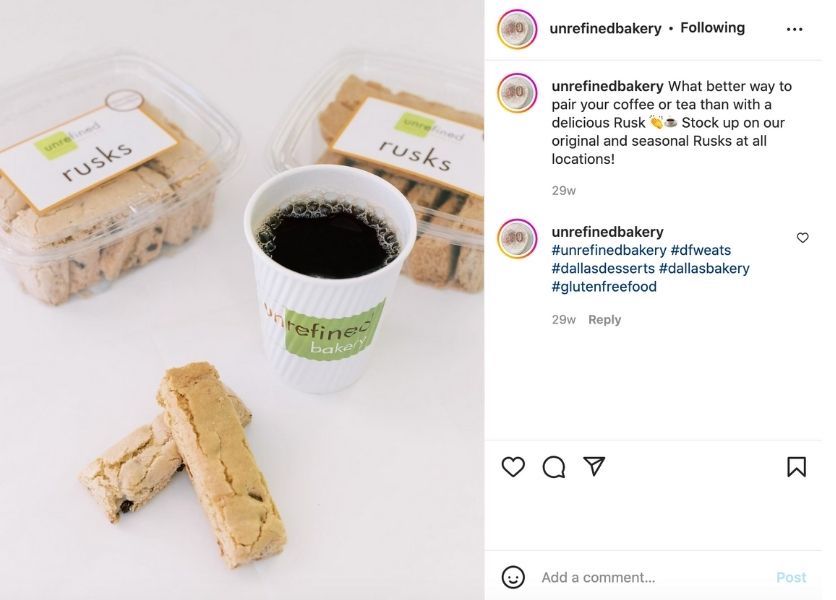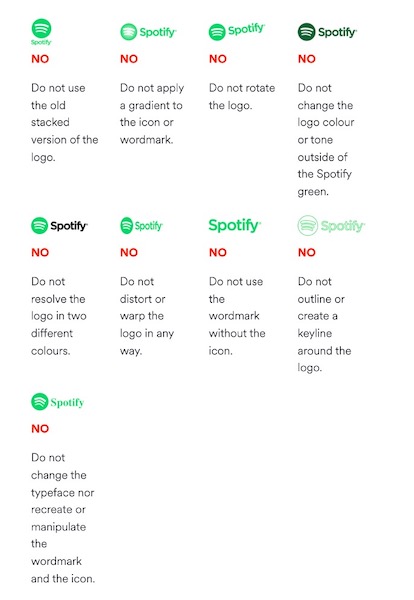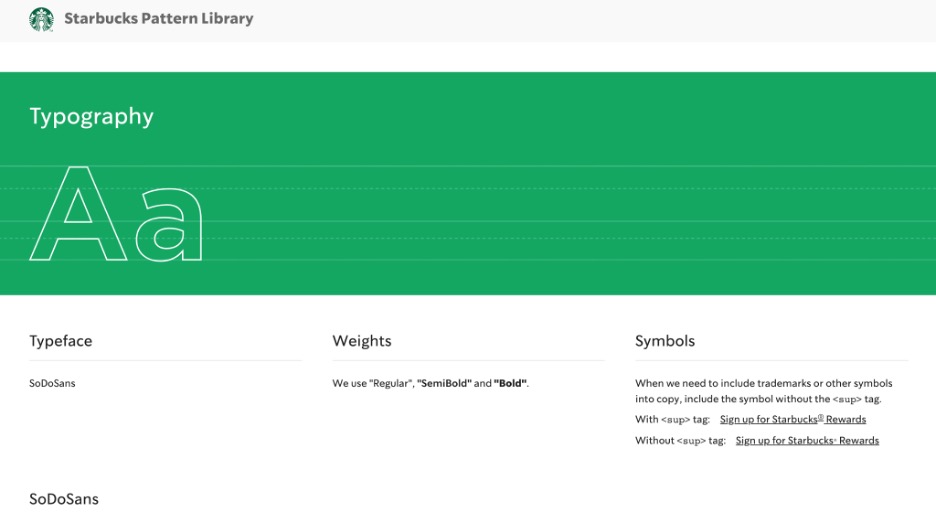When you build a brand, you want it to be instantly recognizable. That’s why companies thoughtfully create logos, color schemes, and content that represent what they do and how they serve their customers.

This business keeps its brand consistent across products.
But once your business is out there in the real world, it’s harder to control the way it’s depicted. Even well-intentioned fans or employees can make images or messaging touting your brand that doesn’t align with the identity you’ve crafted.
That’s why brand kits are so important. They allow small businesses to communicate those guidelines they’ve established for themselves, making it easier for new folks to develop content that accurately represents your brand.
Brand kit table of contents
We’re giving you a full kit for creating your own small business brand kit!
Why does your business need a brand kit?
What is a brand kit?
A brand kit is a clear, concise guidebook for representing your brand with images or words. A brand kit covers everything from your business’s name and logo to color palette, fonts, and guidelines around style and tone for written content and supporting images (think: stock photography, infographics, and Instagram posts).
A brand kit keeps your brand identity consistent. It’s the kind of document that anyone–from a new employee to an outside marketing agency–can pick up and use to create assets for your brand that meet the criteria you’ve set for how you wish to be represented.
Why does your small business need a brand kit?
A cohesive brand image and voice is what makes your business instantly recognizable. Think about McDonald’s and its golden arches. When you see the yellow M looming above the trees off the highway, you immediately think of the brand.
Now, imagine if some McDonald’s locations opted to erect a sign with a green M. You would see that M on the side of the road and wonder whether or not there was food off the upcoming exit.

These guidelines aren’t just for global brands. A brand kit helps your neighbors recognize your business right away. They’ll know your brick-and-mortar locations from down the block. They’ll identify a local print ad as yours–even if they’re just skimming the page. And they’ll see shopping bags from your store out on the street and immediately associate them with your business.
In some ways, a brand kit is even more valuable for a small business than it is for a multinational titan. Big brands benefit from working with a large in-house marketing team and top-tier creative agencies–all of whom are accustomed to maintaining brand standards. Most small businesses don’t have that luxury. A brand kit is something you can hand out to interns, freelancers, team members, and any other folks involved with your advertising and marketing to ensure your messaging and look are consistent. Some businesses use AI tools to help keep their brand consistent with everyone involved.
What to include in your small business brand kit (with examples!)
Now that we’ve covered why it’s essential to put together a brand kit for your small business, let’s look at what to include in the document.
Logo and icons
Your logo is your brand’s calling card and a very important small business branding component. You spent time carefully designing your logo, selecting the right font, image, and colors. Your brand kit will clarify how to use your logo correctly.
![]()
Take this example from Spotify. The brand kit provides an example of the text logo and icon logo in use, along with the approved color combinations for the icon. For instance, while you can use the green icon on a black background, using the white icon on a black background is not approved. Sometimes brands will also include examples of how not to use their logo.

There are subtle differences between what’s approved and what’s not, so sometimes including the list of no-nos helps those who may not have graphic design training understand what is and is not allowed.

Brands sometimes stipulate how the logo can interact with other elements on a page. Typical constraints ensure the logo appears on a clean, uncluttered background and isn’t cut off by other visual elements. Some brand kits ask that logos have a certain amount of whitespace around them, so the image remains recognizable.
Finally, consider including size guidelines for your logo usage. Setting your logo’s minimum and maximum size ensures it remains legible on the page. A logo that only ants can read won’t provide the brand recognition you’re looking for!
Related: Get tips for creating your small business logo.
Typeface
Part of your brand’s visual identity is the typefaces you use in your marketing materials. In your small business brand kit, you should specify which typefaces you use and how you use them.
This begins with dictating fonts and styles. Do you use the light or heavy version of a typeface? Are your headlines all caps or title case? Do you use italics or bold lettering in certain areas? Is a different typeface used for header versus body copy?

These are the kinds of questions a brand kit can clear up. It’s also important to share which typefaces can be substituted for your regular brand typefaces.
Sometimes a program doesn’t have your typeface available. For example, if you use an Adobe typeface, it might not be an option when you create a Keynote presentation. Brand kits often provide acceptable backup options to sub in for your official typeface in a pinch.
Color palette
Most brands have a primary and secondary color palette. The primary color palette contains the colors most recognizable as a part of your brand. Red is a part of Netflix’s primary color palette, while green is in Hulu’s, and purple is in HBO Max’s.
Defining how and where to use your primary and secondary color palettes is integral to establishing your brand’s visual identity. That’s why it’s essential to include those color palettes in your small business brand kit.
Start by listing all primary and secondary colors and include standard digital color codes (HEX, RGB, CMYK, and Pantone® are most commonly used by designers).

Then, share where to use primary versus secondary colors. Primary color palettes often take up more visual space. They are present in advertising, your website, and other assets where you want your brand to stand out and be instantly recognizable to an unfamiliar audience.
Secondary color palettes give your design team some latitude to add depth to designs when used in small doses. Secondary color palettes are great to include in visual assets like social media images or sales decks to prospective companies.
By introducing secondary colors to an audience that’s already familiar with your brand (namely, your followers or warm leads), you’re expanding the visual vocabulary for your brand without adding confusion.

Related: Our friends at WordStream share how to choose the right color palette and website color scheme for your business.
Secondary visuals
Last up in the realm of visual guidelines to include in your brand kit are rules around secondary images. You’ve already talked about how to use your most important symbol–your logo–but what about other imagery you’d like to include in marketing materials? These include photos you share on social media, images used in blog posts, or icons representing your offerings on your website.
While these aren’t part of your central brand images, they need to work seamlessly with your broader visual identity.
Start with the basics: Do you use photography or drawings in your secondary visuals? Some brands like design that’s more focused on cartoons, doodles, or icons. Other brands lean into photographs and stock images.
What is the color palette for these secondary images? If you’re using cartoons, do they include your secondary color palette? With photography, is there a particular filter or tint to use?
If you’re using photography, it’s essential to set guidelines for the types of stock images you wish to include. Aside from the color palette, are there certain kinds of visuals to lean into or steer clear of? For example, a brand located in a rural area would probably wish to include bucolic scenes and avoid photos of bustling cities.

Meta, for example, provides a gallery of approved images of people, places, and events that can be used when talking about the brand.
Written guidelines
While your visual identity is what your audience will instantly recognize as being emblematic of your brand, guidelines for your written content also deserve space in your brand kit.
Every brand has a unique way of speaking with its audience. Are you formal or casual? Fun or serious? Earnest or tongue-in-cheek? Identifying words you’d use to describe your voice and tone is a great place to start in creating written guidelines for your brand’s content.
Often, marketers will include examples of written content that represent the desired voice and tone for the brand. It may also be helpful to list words you use and don’t use in your marketing copy.
Related: Dive deeper into defining your brand with our guide to creating a brand identity.
Small business brand kit checklist and templates
Ready to create a small business brand kit of your own? Here’s a checklist of the items to include:
- Logo
- All wordmarks and/or icons
- Approved color palette
- Clear space
- Dos and don’ts for logo usage
- Typeface
- Typeface for logo
- All acceptable typefaces for branding
- How and where to use those typefaces
- Fonts and styles for all typefaces
- Backup typeface(s) for use when brand typefaces are unavailable
- Color Palette
- Primary color palette
- Secondary color palette
- Hex, RGB, CMYK, and Pantone for each
- How the colors can interact with each other (dos and don’ts)
- Secondary Visuals
- Types of visuals
- Color palette for visuals
- Acceptable/unacceptable iconography
- Where and how to use secondary visuals in marketing materials
- Written content
- Brand voice and tone
- Words we use, words we don’t use
- Writing samples
Want to pull this into a nice-looking brand kit of your own? We curated a few of our favorite brand kit templates from Canva. (And, if you’re not sure how to use Canva, we have a handy tutorial for you!)

Get started with your small business brand kit
Creating a comprehensive brand kit can help you build a solid brand, which you need in order to build a strong brand awareness strategy. So, get to building your brand kit and watch the pieces fall into place!






